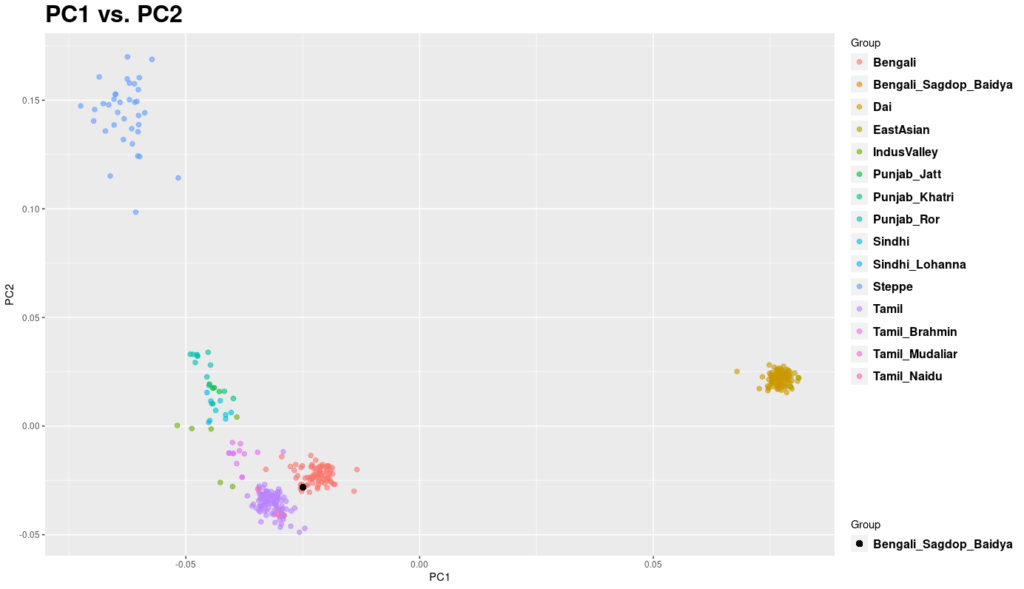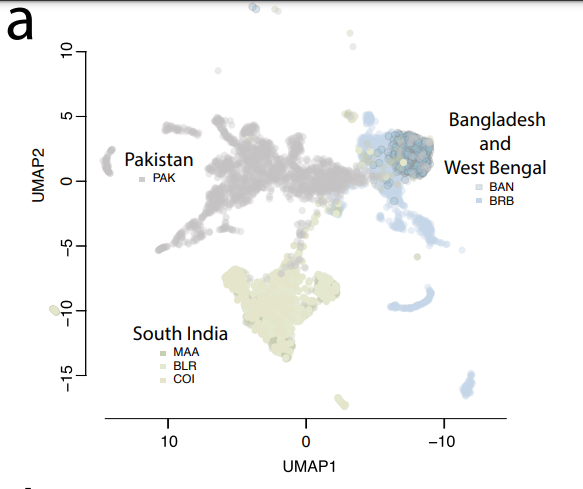A Maharashtra Deshastha Brahmin sent me his sample. He plots with the Maharashtra Kayastha. He’s much more like a South Indian Brahmin than a North Indian Brahmin. The Maharashtra Saraswat Brahmin seems more north shifted.
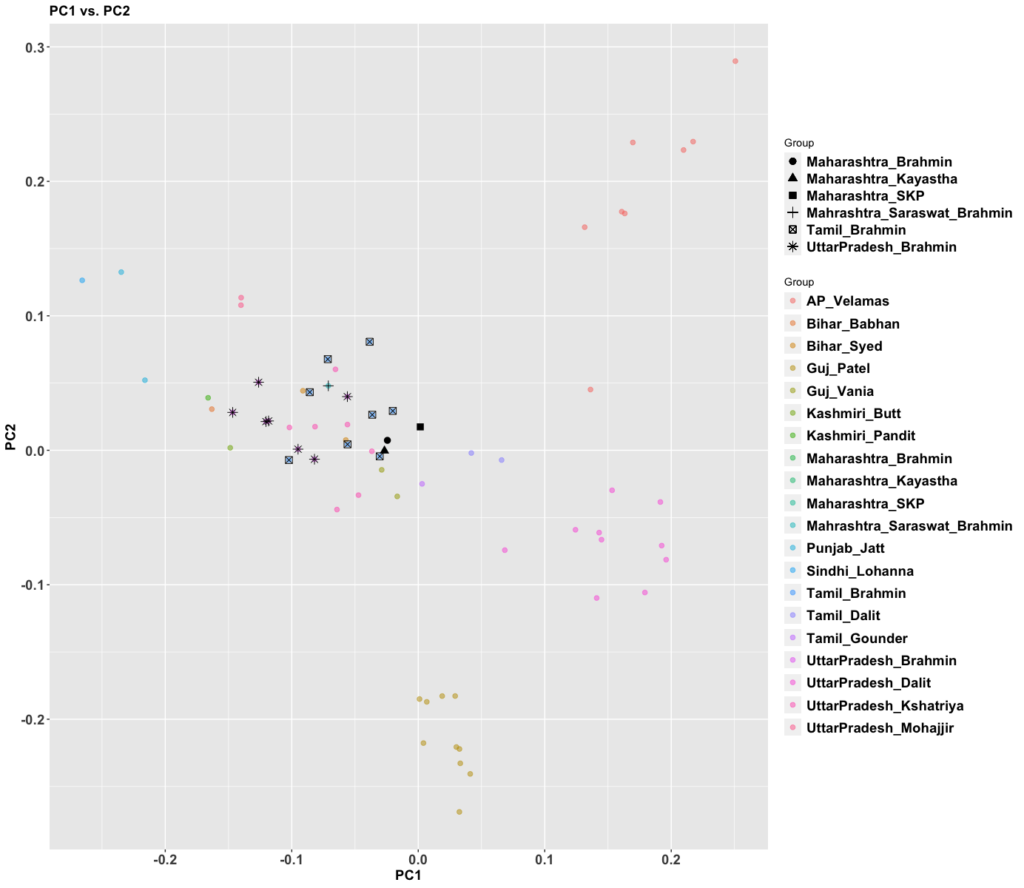
Best of The Indic Explorer Show – 2022 Rewind
On this End of the Year Special Episode of my weekly Podcast- The Indic Explorer Show on YouTube, you can get to see the best highlight reel moments of the show. It has been just 6 months since I started this channel and we have grown from strength to strength, clocking 1k subscribers this month.
Looking forward for your continued support.
The Indic Explorer YouTube channel focusses on the interplay of Indic culture with modernity explored through different facets in the socio-cultural sphere.
Do subscribe to the channel at https://www.youtube.com/theindicexplorer
and follow me here
Twitter- https://twitter.com/theindicexplor1
Instagram- https://www.instagram.com/theindicexplorer/
Substack-https://digitaldharma.substack.com/
South Asian nations
I dislike the “GDP wars” that sometimes crop up on this message board. Comparing India to Bangladesh or Pakistan is apples to oranges. India is economically a collection of nations, and the average can be misleading. That being said, a lot of the Indian commentators also seem to engage in a lot of cope when it comes to GDP comparisons between Bangladesh and India; on the whole I often agree with them…but the fact that there can be a comparison despite India having relatively dynamic economies in Gujarat, Maharashtra, and around Delhi, Bangalore and Hyderabad, should lead to some soul-searching about inter-regional inequalities, rather than arguing about statistics.
But, as a biologist I like looking at health indicators. Harder to fake (thought not impossible), and clearer in interpretation.
First, let’s be honest: Pakistan is now the “slow kid” in the subcontinent. Mind you, many South Asians will admit that they are more handsome people because they are taller and lighter skinned (let’s be frank here), the advantages Pakistan accrued through its Cold War alliance with the US and less strident adherence to socialism than India have been frittered away. Anytime India sees itself clustering with Pakistan, it has to wonder “what are we doing wrong???” (again, the story in India is inter-regional variation). Despite over a generation of war and strife, Sri Lanka still had a lead in these indices, but the other nations are catching up. Finally, Bangladesh’s status is a basket case still shadows some of the numbers, like the number of physicians per thousand and age at teen births and motherhood. All that being said, what’s the good of having physicians if your life expectancy isn’t that great?
Book Review: Ancient India, a Culture of Contradictions
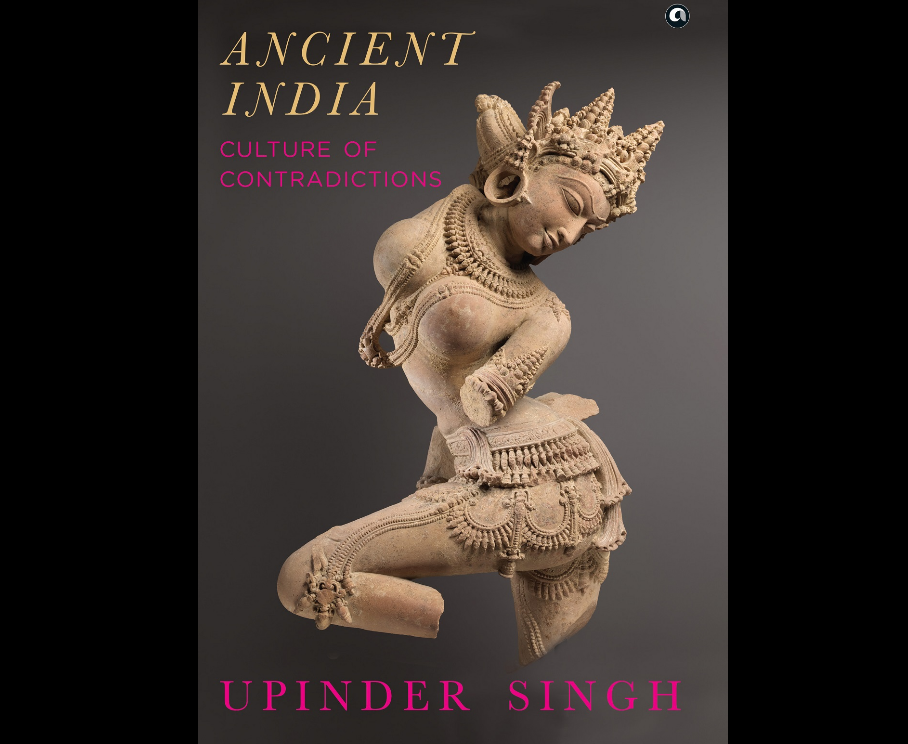
Of the 4 books of Dr Upinder Singh i have read, this is arguably the weakest. Firstly it doesn’t add much to the discourse – its largely summary of her earlier works thematically – with slight re-interpretation. The book is divided along four themes – Social inequality (Caste), Love, Gender relations, Violence and Religious freedom/plurality.
If you have been reading and following Dr Singh’s work and have good recollections, the ever present politics of this book can be jarring. The author starts with the anecdote of suicide of Dalit activist Rohit Vemula before embarking on the historic analysis of “Caste”. jAti-varna Matrix of Ancient India needed more in depth analysis as done for Political violence (in author’s previous book on Political Violence in Ancient India). The essay covers all the bases, but fails to enrich an informed reader – while making some unsubstantiated arguments.
eg: Caste in Sangam Era (or lack thereof). While the argument made holds for Vaidika concept of “Varna” it doesnt hold for Caste – a hybrid of jAti-Varna.

I felt the author played it very safe ending with “remains imperfectly understood”. Isn’t jAti-Varna system also an “old kin based” system ? Doesn’t it seem more natural to speculate that existing old kin based system merged with Vaidika abstraction of Varna ? Maybe – maybe not but the author doesn’t try to speculate.
The “desire and detachment” essay was refreshing, something i would definitely go back to. The next section “Goddesses and misogyny” covers the religious developments well enough but leaves the Economic(“Marxist?”) reasons for patriarchy out of the analysis. The role of economics in the patriarchal setup of agrarian and pre-industrialised societies doesn’t get more than a brief mention.
The next section, “Violence and Non-Violence” was a summary of her earlier book – good enough, but i would suggest interested parties to read that book – as it goes into the texts while making grand narratives and arguments. As a result the arguments in the previous book stick, this doesn’t (though its the same argument). Also some inconsistencies I had not noticed in earlier book came to my notice this time around. While comparing Ashok’s ideological espousal of Non-violence to Kautilya’s pragmatic approach (one may differ in the labels), the author doesnt fully challenge the above assumption even though it comes up in the text. Following is Kautilya’s recommendations for looking after animals.

How is looking after incapacitated horses pragmatic?
If one re-reads the subtext, ideology (empathy?) comes up again and again in Kautilya, whereas pragmatism and realpolitik in Ashok – the point the author notices in Ashok but not in Kautiya.
The last section was also enjoyable, if one manages to ignore the often jarring political undertone. The author lets slip a line
“These days, one dare not crack jokes about religion.”
Firstly, we cannot compare what we can glean of an ancient society from reconstruction to the documented 21st century realities. While trying to avoid the romantic reconstruction (or for contemporary politics), the author seems to have gone into the same. Yet I enjoyed the information I got from the last section, especially the Kshemendra’s satires from ancient Kashmir.
I would recommend the books for those who are really interested in Ancient India, but I would also recommend dozens of other books before this – especially the ones I havent read. Jarring and without original insights (unlike her previous works) I would still rate this book 3/5 for its readability and denseness.
What I had admired about Dr Singh’s work till now was her unwillingness to let politics and ideology rear its ugly head in her work – unlike other authors on ancient India (Including new emerging scholarship from the Hindu side). Though what saves the book is the author’s unwillingness to make “leaps of faith” – which become foundation for next scholarship – common in Ancient Indian History.
Merry Christmas!
I got a sample from someone where one parent was a West Bengal Sadgop, and another parent a Baidya with family origins in East Bengal. One hypothesis that I’ve see is that Baidya are basically Brahmins who lost their caste. Genetically this does not seem to be the case. Bengali Brahmins shift considerably toward the steppe samples compared to average Bangladeshis, and this individual does not. Rather, their uniqueness is that they have very little East Asian ancestry compared to the median. This is typical of non-Bramin West Bengalis. It is plausible to me that this individual’s Baidya parent, from East Bengal (Bangal), had more East Asian ancestry than their West Bengali (Ghoti) parent, so you see an average.
Though there are some exceptions, it seems that the non-Brahmnin bhadralok castes did undergo ritual uplift from that of conventional peasant cultivators at some point in Bengal. This seems similar with regard to Kayasthas in UP, but not in Maharashtra, where CKPs seem to have an affinity with Brahmins distinct from the Maratha cultivators.
Update: I found a preprint that pretty much answers all the questions re: Bengalis.
Here is a panel with a UMAP representation of genetic distance, and you see West Bengal is adjacent to Bangladesh. But there is a “tail” of individuals that are parallel to South Indians.
This UMAP makes clear Bengali Brahmins are distinct from Kayasthas and Sadgop. These populations seem roughly similar to most Bangladeshis except they are shift over, and I assume this means less East Asian ancestry, as PCA seems to how:
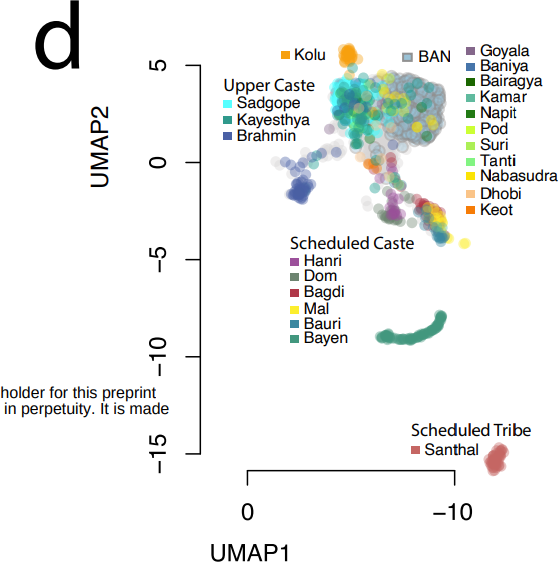
Sree Iyer on the Cultural Outlook of the Indian Diaspora
Sree Iyer of the Pgurus YouTube Channel came on the 20th Episode of The Indic Explorer Show, my weekly podcast to talk about The Cultural Outlook of the Indian Diaspora.
The Indic Explorer YouTube channel focusses on the interplay of Indic culture with modernity explored through different facets in the socio-cultural sphere.
Do subscribe to the channel at https://www.youtube.com/theindicexplorer
and follow me here
Twitter- https://twitter.com/theindicexplor1
Instagram- https://www.instagram.com/theindicexplorer/
Substack-https://digitaldharma.substack.com/
Caste in the Indian subcontinent: the wages of Manu
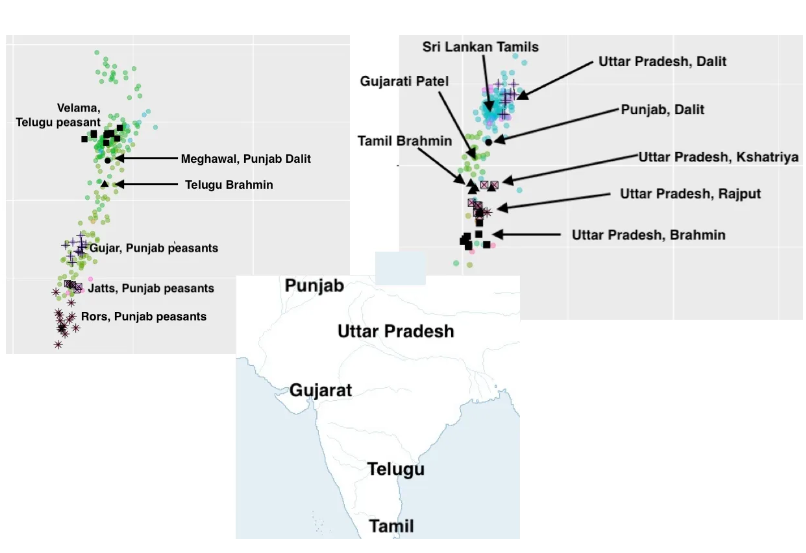
A new post on caste at my Substack. I don’t think I have much more to say on this topic on the high level; the DNA data is now what it is. More details will come in, but we have the general outline.
It is now up to social historians to make sense of it.
(also, a new phrase for Pakistanis: “Allah in the streets, Manu in the sheets”)
A Dialogue with Dr. Michael Altman, author of “Hinduism in America: An Introduction”
I just published an interview with Dr. Altman over on the Hindoo History substack. Posting an excerpt here but would encourage BP readers to read the whole thing. He’s also the author of “Heathen, Hindoo, Hindu: American Representations of India, 1721-1893”, a key contribution to the study of how the “Hindoo” has been represented in American history:
HH: Dr. Altman, first of all, thank you so much for doing this. As readers of #HindooHistory know, your work has been instrumental to this project. I really didn’t know what to do with all of these random newspaper clips that I was collecting until I fortuitously came across your first book, Heathen, Hindoo, Hindu: American Representations of India, 1721-1893. Your book gave me the intellectual scaffolding for the primary source material, so thank you for that! You can imagine how excited I was when I saw that you had written another book, Hinduism in America: An Introduction, which is the subject of our dialogue today.
To kick it off, in your introduction you note that you were hesitant to title the book Hinduism in America: An Introduction and would’ve preferred to call it Some Things Someone Somewhere Called ‘Hinduism’ in a Place Someone Somewhere Called America: An Introduction. I loved this, and I was reminded of your introduction to Heathen, Hindoo, Hindu, where you make a critical distinction: This is not about how “Hinduism” arrived in America, but rather about how it became conceivable in America. Can you elaborate on this methodological approach and explain how it informs your argument in Hinduism in America?
MA: Thanks so much, Vishal. I’m really glad you found my first book so helpful. You write these things and you never know who is going to read them or what they will do with it once they read it. Your work sharing the newspaper clippings you find is really important, and I really appreciate it. I’ve actually heard from other religious studies professors that they use your Instagram and my book together in their classes! So, thanks for the work you’ve done to bring public attention to this really interesting history.
The second book, Hinduism in America: An Introduction, was a really interesting opportunity to write a different kind of religious history. The book is part of a larger series of “ in America” introductions and I wanted to write a book that could fit in that model but also raise some questions about the very idea of discrete unified traditions or religions (Christianity, Hinduism, Islam, Buddhism, etc. ) in America (or anywhere else for that matter). For me, the job of the religious studies scholar is not primarily to identify, describe, or define these traditions. Instead, our job is to pay attention to how individuals, communities, groups, institutions, nations, and other social formations define and identify these traditions. Put another way, many people who all call themselves “Hindu” or “Christian” or “Muslim” don’t all agree on exactly what it means to be “Hindu” or “Christian” or “Muslim,” and it’s not my job to solve that. It’s my job to pay attention to how and why people use those terms to describe themselves or others and what is at stake in those processes of labeling people and groups. As I tell my students, we are not umpires and we don’t call balls and strikes. We are play-by-play analysts who describe how the game is being played and analyze why it’s being played the way it is. My approach to the study of religion is that religion is one way people create “us and them” and my job is to figure out how and why that happens.
So for this book, rather than telling readers “this is what Hinduism is” and then “here’s where you can find it in America,” I wanted to walk through the ways the categories “Hindu” and “Hinduism” have been used by a variety of people, groups, communities, and institutions in America. I also wanted to introduce readers to some basic analytical terms in religious studies (difference, Orientalism, diaspora, etc.). So, each chapter looks at a set of examples of how and why people in America described or defined or identified “Hindus” or “Hinduism” and then uses those examples to illustrate one of these analytical terms. The chapters are loosely in chronological order but it’s not a single historical narrative. Rather, it’s a variety of examples of how somebody somewhere called something “Hindu.”
Open Thread, 12/9/2022, Brown Pundits
What’s going on?
Ratan Sharda on State of Cultural Deracination & Cultural Literacy in Dharmic Youth
Ratan Sharda comes on The Indic Explorer Show, my weekly podcast to talk about ‘The Causes of Cultural Deracination’ and ‘How to Improve Cultural Literacy Among Dharmic Youth.’
The Indic Explorer YouTube channel focusses on the interplay of Indic culture with modernity explored through different facets in the socio-cultural sphere.
Do subscribe to the channel at https://www.youtube.com/theindicexplorer
and follow me here
Twitter- https://twitter.com/theindicexplor1
Instagram- https://www.instagram.com/theindicexplorer/
Substack-https://digitaldharma.substack.com/
